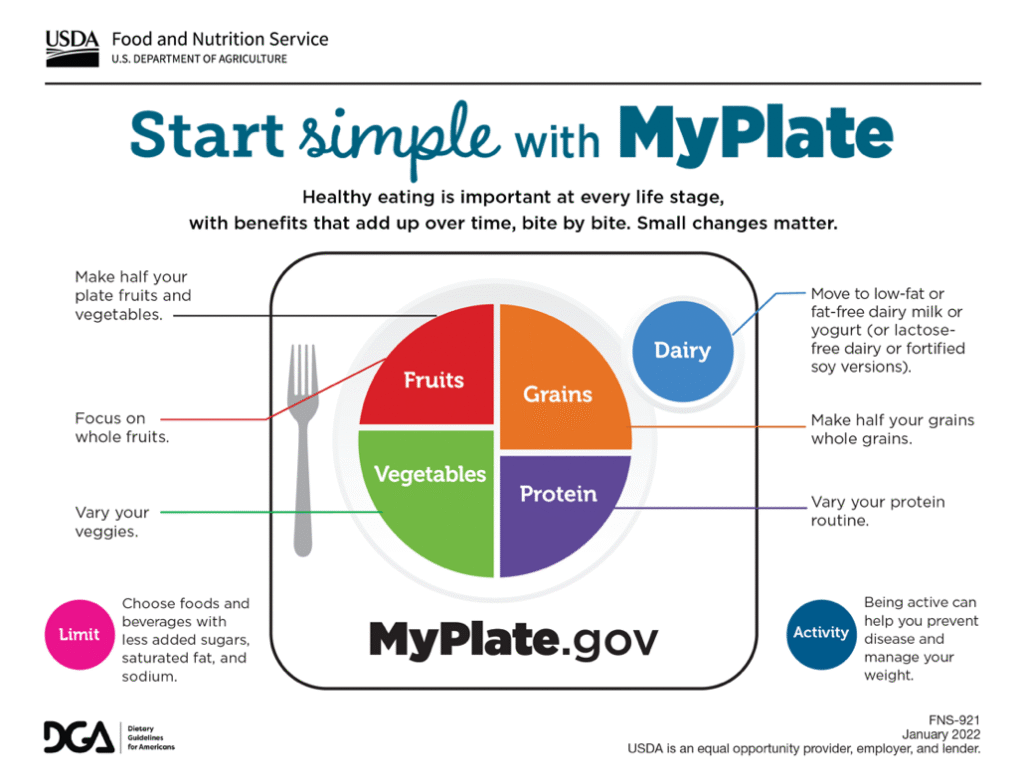Na-confuse Ka Na Ba? A Journey Through Our Shifting Nutrition Advice
Remember that colorful triangle from your old textbooks? The one that told us to eat mountains of bread, rice, and pasta? For many of us, the Food Pyramid was our first introduction to the world of “healthy eating.” But fast forward to today, and you’ll see a completely different picture—a plate. It’s no wonder many active Pinoys feel a bit of whiplash. One minute fats are the enemy, the next, it’s carbs. So, what gives? Why can’t nutrition experts make up their minds?
This isn’t about experts being fickle; it’s about science growing and learning. Think of it like updating your phone’s software—each update fixes bugs and improves performance based on new information. Our understanding of the human body and food is constantly being updated. Let’s take a trip down memory lane to understand the nutrition history of these dietary guidelines and see how we got from the American diet’s classic food pyramid to our very own Pinggang Pinoy.

The Birth of an Icon: The Original USDA Food Guide
In 1992, the United States Department of Agriculture (USDA) launched the Food Guide Pyramid, and it quickly became a global symbol for healthy eating. Its concept was simple: the foods at the wide base were what you should eat most, and the foods at the narrow top were to be eaten sparingly. For many, this was a revolutionary and easy-to-understand visual tool.
The pyramid was structured like this:
- Base: Breads, cereals, rice, and pasta (6-11 servings)
- Second Level: Fruits (2-4 servings) and Vegetables (3-5 servings)
- Third Level: Dairy (2-3 servings) and a section for meat, poultry, fish, beans, eggs, & nuts (2-3 servings)
- Tip: Fats, oils, and sweets (use sparingly)
On paper, it promoted a diet rich in plant-based foods and limited in sugar and fat. It was a step in the right direction, moving away from the older “four basic food groups” model. But as nutrition science dug deeper, cracks began to appear in this triangular foundation.

Why the Pyramid Tumbled: A Shift in Science
The main criticism of the original food pyramid was its oversimplification, which led to some misleading advice. One of the biggest issues was how it treated carbohydrates and fats.
The Trouble with Carbs and Fats
The pyramid’s massive base encouraged a high intake of all carbohydrates, without distinguishing between whole grains (like brown rice and oatmeal) and refined grains (like white bread and sugary cereals). This vagueness may have contributed to overconsumption of refined carbs, which can lead to blood sugar spikes and weight gain.
At the same time, all fats were lumped together at the peak, branded as “bad.” This ignored the crucial difference between unhealthy trans fats and the healthy unsaturated fats found in olive oil, nuts, and avocados. As research evolved, it became clear that these healthy fats are vital for heart and brain health. According to Harvard’s School of Public Health, this lack of distinction was a major flaw that needed correction.
The Evolution: From a Confusing Pyramid to a Simple Plate
By 2005, the USDA replaced the original pyramid with “MyPyramid,” a version that featured vertical stripes and a figure climbing stairs, emphasizing exercise. While well-intentioned, most people found it confusing and difficult to interpret without visiting the website. It was a transitional phase in the history of dietary guidelines.
Then, in 2011, came a welcome change: MyPlate. The pyramid was gone, replaced by a simple, intuitive plate divided into four sections.
The MyPlate model made healthy eating much easier to visualize for the American diet and beyond. The message was clear and direct:
- Fill half your plate with fruits and vegetables.
- Make at least half of your grains whole grains.
- Choose lean proteins.
- Opt for low-fat or fat-free dairy.

This new guide corrected the old pyramid’s biggest flaws. It emphasized nutrient density, didn’t banish any food group, and focused on proportions, which is far more practical for daily meals.
Bringing it Home: The Rise of Pinggang Pinoy
Of course, the USDA food guide was designed for an American audience. What about us here in the Philippines? Our diet, culture, and local food availability are different. Enter the Pinggang Pinoy (Filipino Plate), developed by the Food and Nutrition Research Institute (FNRI).

Pinggang Pinoy adapts the MyPlate concept to our local context. It’s a visual guide that shows the right food group proportions on a per-meal basis for the average Filipino adult.
- Go (Carbohydrates): About 1/3 of the plate is for rice, corn, or bread. For us Pinoys, this is usually kanin! The guide reminds us to opt for brown rice.
- Grow (Protein): About 1/6 of the plate is for protein sources like fish, lean meat, or tofu.
- Glow (Vitamins & Minerals): A generous half of the plate is dedicated to fruits and vegetables, our local gulay and prutas.
This model is a fantastic tool because it respects our food culture while promoting balanced, healthy eating. It acknowledges that rice is a staple but emphasizes portion control and the importance of filling the rest of our plate with nutrient-rich foods.
Beyond the Plate: Fine-Tuning Your Fuel
These visual guides—from the food pyramid to Pinggang Pinoy—are excellent starting points for the general population. They provide a solid framework for building a healthy diet. However, for those of us with specific fitness goals, like bodybuilders, marathon runners, or anyone looking to optimize their performance, sometimes a more detailed approach is needed. Visual guides don’t always account for individual needs based on activity level, body composition, and goals.
That’s where understanding the building blocks of your food comes in. If you’re ready to take the next step in personalizing your nutrition, it’s worth learning how to start counting your food with a macronutrient calculator. This allows you to tailor your intake of protein, carbs, and fats to perfectly match what your body needs to succeed.
Your Plate, Your Journey
The story of our dietary guidelines is one of progress. The shift from the food pyramid to MyPlate and Pinggang Pinoy shows our commitment to refining our knowledge for better health. So, don’t be discouraged by the changes. Embrace them as a sign that we’re getting smarter about how we fuel our bodies.
The best diet is one that is balanced, sustainable, and works for you and your goals. Use Pinggang Pinoy as your daily guide, listen to your body, and keep learning.
Now that you’re equipped with the knowledge to fuel your body right, why not put that energy to good use? Challenge yourself and see what you’re capable of. Check out this complete list of upcoming fitness events across the Philippines and find your next race, fun run, or competition!
 |









